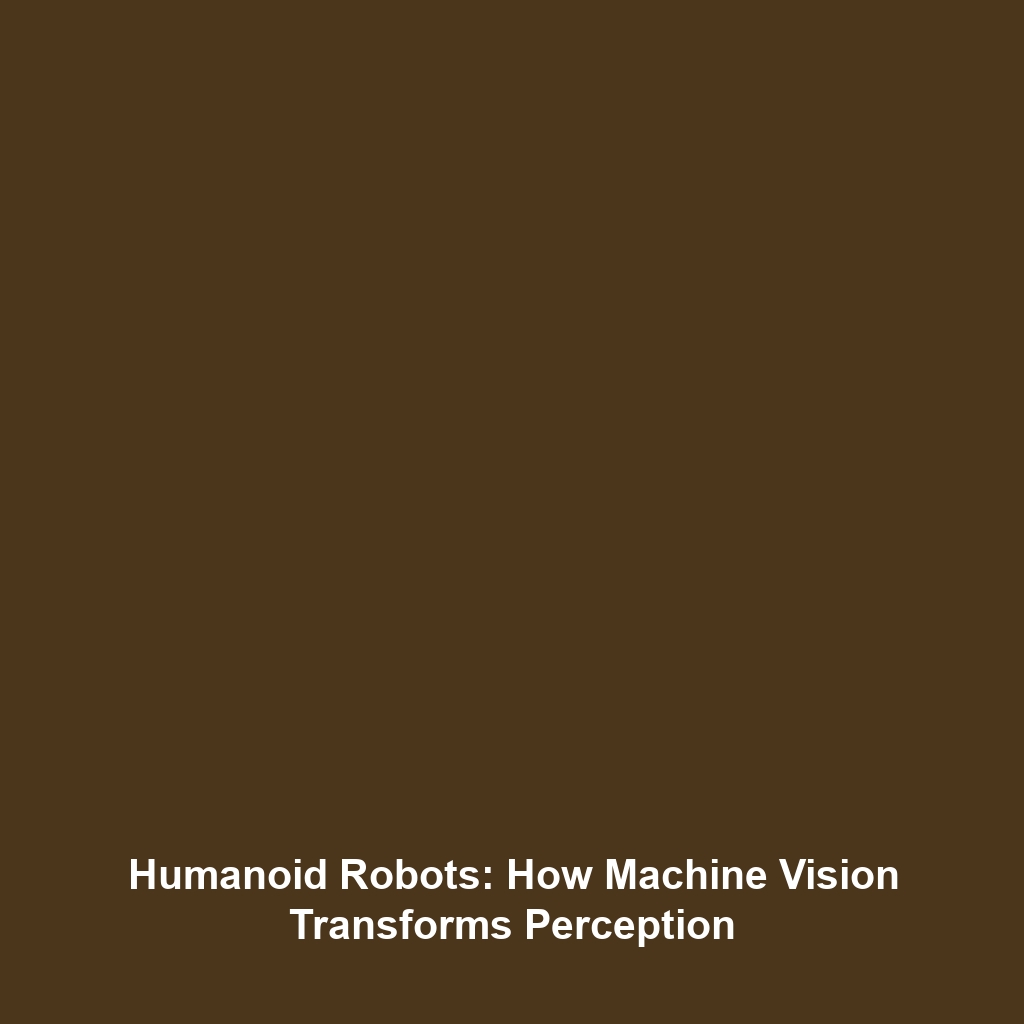How Humanoid Robots Use Machine Vision to Perceive Their Surroundings
Humanoid robots have made significant strides in functioning alongside humans in various environments. A key factor in their capabilities is their use of machine vision—a technology that enables these robots to interpret visual data much like humans do. Understanding how humanoid robots utilize machine vision to perceive their surroundings not only sheds light on their operational mechanisms but also highlights their potential to revolutionize industries ranging from healthcare to entertainment.
Key Concepts of Machine Vision in Humanoid Robots
Machine vision refers to the ability of machines to interpret and understand visual information. In the context of humanoid robots, key concepts include:
- Image Acquisition: This involves capturing images through cameras and sensors that mimic human eyesight.
- Image Processing: Software algorithms analyze and process the captured images to extract meaningful information.
- Object Recognition: Robots identify and classify objects, which is crucial for navigation and interaction.
- Depth Perception: Techniques like stereo vision allow robots to gauge distances to objects and navigate effectively.
Applications and Real-World Uses
The applications of how humanoid robots use machine vision to perceive their surroundings are vast and impactful:
- Healthcare: Robots equipped with machine vision assist in surgeries by providing enhanced visual feedback to surgeons.
- Service Industries: Humanoid robots use vision to interact with customers in retail or hospitality, recognizing faces and preferences.
- Education: In classrooms, robots can perceive the surroundings to facilitate learning by adapting to student needs.
Current Challenges
While the advancements in machine vision for humanoid robots are promising, several challenges remain:
- Environmental Variability: Changes in lighting and background can affect image recognition capabilities.
- Data Processing Speed: Real-time processing of visual data remains computationally intense, potentially leading to delays.
- Safety and Ethics: Ensuring that robots interpret visual data ethically without invading privacy continues to be a concern.
Future Research and Innovations
Ongoing research in machine vision is paving the way for future innovations in humanoid robotics:
- Enhanced Learning Algorithms: Machine learning techniques are being developed to improve object recognition and decision-making processes.
- Multi-Sensor Integration: Combining data from various sensors will enhance the robots’ understanding of complex environments.
- Real-time Image Processing: New hardware advancements aim to facilitate faster processing for immediate response capabilities.
Conclusion
In summary, machine vision is pivotal for humanoid robots to perceive their surroundings effectively. From healthcare to educational settings, the relevance of this technology will only grow as innovations and research continue to evolve. For more information on advancements in humanoid robots, explore our other articles on robotics and AI technology.

Leave a Reply